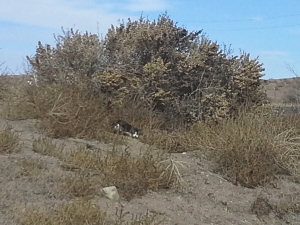**Feral cats are not considered under the title of pest control. Some wildlife management companies provide services for the trapping and removal of feral cats. Local laws and services provided by animal law enforcement vary based upon the location. We recommend you contact your local office for additional information. **
Domesticated cats have been in homes for centuries as treasured companions and to assist with rodent control. Feral populations of these once domestic cats are now found in and around a vast majority of cities and towns. Colonies of feral cats increase in population at alarming rates and some scientists estimate that a single un-spayed female cat and her off-spring can produce approximately one million cats within her lifetime alone. Cats have a natural predator instinct that while helping to control rodents in some situations, also causes a threat to wildlife such as birds, squirrels and rabbits.
Diseases can spread quickly through once healthy cat populations. Un-altered males and females alike may become territorial, causing fights that result in transmittal of disease as well as injury. Fighting and breeding behaviors are often a nuisance to neighboring residents. Parasites are also common in feral cat colonies including external skin parasites like mites, fleas and ticks as well as internal parasites such as roundworms, hookworms and tapeworms. Many of these parasites and diseases can affect humans as well as domestic cat and dog populations for pets that are allowed to roam outside their home.
Trap, neuter/spay and return (TNR) programs are becoming increasingly popular in assisting to control the reproduction of feral cat colonies. Volunteers and organizations humanely trap the feral cats, spay or neuter and vaccinate them and then return them to their original colony location. This process is meant to slowly decrease the feral populations. Although feral cats can at times be domesticated again, many organizations do not have the resources and time available to slowly re-introduce feral cats to domestic lifestyles. Young kittens have the greatest chance of being re-introduced as they have had the least amount of exposure to feral life. Residents interested in trap, neuter, return programs should contact their local humane society to inquire about area programs. Typically these programs are offered at minimal cost to residents.
